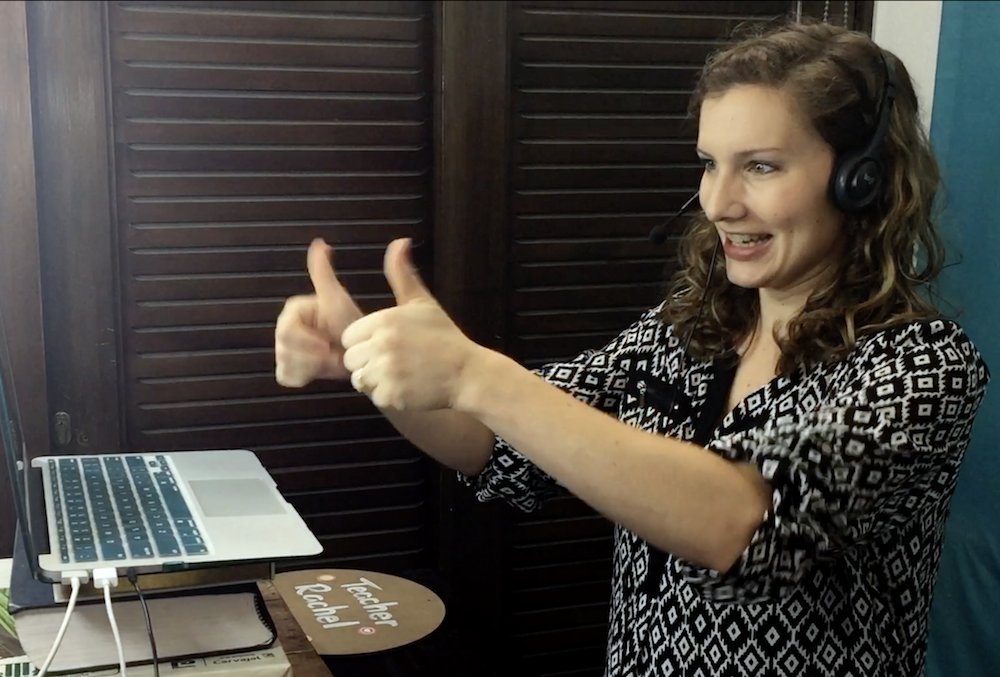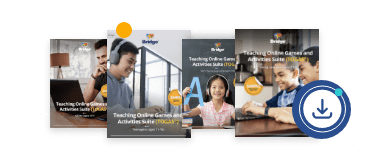Reading is essential to boost your English learners’ skills, so ESL reading comprehension activities are vital to your students’ success. Some students may not be fond of reading or are daunted by the thought of running into unfamiliar words or phrases, but fret not! We’ve got ESL reading comprehension activities that make reading fun and engaging for different types of English students. So without further ado, let’s dive in to some ESL reading comprehension exercises and activities!
Are you a teacher of young learners? Learn about the power of storytelling for young learners in the ESL classroom.
How do you make your reading comprehension fun in ESL classes?
When it comes to practicing reading comprehension in English classes, it’s not uncommon for some students to think that this activity only involves reading long texts, learning new words, and answering a couple of questions. While they do help your students practice skimming, scanning, inferring information, and many other skills, ESL reading comprehension activities don’t have to be boring at all! Here are some tips on how you can turn your reading comprehension activity from mundane to fun and engaging.
Gamify!
Make your reading comprehension time more engaging by turning it into games or activities that will have learners compete (in a friendly way). Instead of sticking to the usual handouts and ESL reading comprehension worksheets, you can come up with races, challenges, and many other interactive activities that will make your class more memorable and worthwhile.
Even adult learners of Business English love a good game. Learn more with 10 Fun & Easy Games for Teaching Business English to Adults.

Choose activities that will build important skills.
There’s more to reading comprehension than just answering questions – it also trains students to develop reading skills, such as summarizing, sequencing, drawing conclusions, and solving problems. As you develop your reading comprehension activities, you can vary them based on the skills you’d like your students to work on. For instance, you can choose a game wherein students have to order events or create the correct sequence of a story they’ve just read. Over time, students learn to move into higher-order thinking skills related to critical thinking.
In addition, a lot of these reading skills also serve as strategies when your learners are preparing for English proficiency tests such as the PTE, IELTS, and TOEFL. The reading sections of these exams typically involve long texts and various types of questions, such as finding the main idea and identifying key information, so you’ll definitely want to prepare your students for these tasks!
Use realia and visual aids.
Bring your reading comprehension activities to life with realia and visual aids such as pictures, props, diagrams, timelines, and other tools – they not only make your class activities more colorful and engaging but also help your learners comprehend what they’ve read more easily, especially if they are visual learners. Also, instead of you writing or illustrating on the board (or virtual whiteboard) all the time, you can have students do these tasks for a more interactive experience.

What activities help with reading comprehension?
As long as your students are able to learn and understand your reading activity and there is a lot of interaction involved in the class, you can create your own reading comprehension tasks. Here are some activity ideas you can get inspiration from and tweak depending on the kind of learners you have:
- Pre-reading vocabulary games (search for the synonym, word hunt, word pairs)
- True/false type of activities (guessing games, races)
- Sequencing activities (drawing, picture story, puzzles)
- Retelling activities (role-plays, summarizing a story)
- Making predictions (guessing games, charts)
Do you have students who struggle with new vocabulary? Learn some top methods for introducing new ESL vocabulary words.
ESL reading comprehension activities for beginners
Here are some ESL reading comprehension activities and exercises your beginner learners will enjoy.
True or False Race
What you’ll need: four cards, two with “true” written on them and the other two with “false”
How to do it: In this game, the students compete to win as many points as possible. After the class reads the text, divide the class into two groups. Give each group a pair of “true” and “false” cards. Then, tell them that you will read out a statement based on the text they’ve read and they have to raise the correct card. The first person who raises the correct card wins a point.
Online variation: You can create your own true or false games on free, game-based learning platforms like Kahoot!
Fun Story Elements
What you’ll need: a whiteboard, small cards to draw on
How to do it: On the cards, draw different symbols or shapes (e.g., a heart, a circle, a smiley, etc.). Then, assign a story element to each one (e.g., heart=setting; circle=main characters). After reading the story, have each student pick a card from the pile. Then, they have to identify the story element based on the card they’ve gotten.
Online variation: You can use the virtual whiteboard on Zoom or Skype or make use of Google Jamboard. You can also create online cards using digital flashcard maker platforms.
Draw the Character
What you’ll need: a sheet of paper, pencils and/or coloring materials
How to do it: This activity can usually be done after reading a story, but you can also use it for other types of texts such as news articles and biographies. After having the class read the text, tell the students that they’ll have to draw their version of the character in the story. Give them some minutes to create their drawings, which they’ll have to present to the class afterward.
Vocabulary Bingo
What you’ll need: a whiteboard, Bingo cards (4 x 4)
How to do it: For this pre-reading vocabulary activity, you’ll have to choose 16 words from the text and find a synonym for each. Write the synonyms on the board and have the students write the words in the boxes of their Bingo cards. Next, read out a word from the text. The students then have to look for the synonym of the word you’ve read and cross it out on their Bingo cards. The first student who completes a straight vertical, horizontal, or diagonal line with four boxes should shout “Bingo” to win.

ESL reading comprehension activities for intermediate learners
Here are some ESL reading comprehension exercises and activities that will engage your intermediate learners.
Timeline
What you’ll need: a whiteboard, paper strips or small cards to write on
How to do it: You can do this activity after reading a story, a news report, or any type of narrative text. On the board, create a timeline – you can write the dates or days in the story to guide the students. Then, on the strips of paper, write down the events described in the text.
After reading the story, have the students pick a strip of paper and place it on the correct date on the timeline. For bigger groups, you can create two copies of the paper strips, and then divide the students into two groups. Afterward, tell the groups that they have to construct the timeline of the story as a group, and the first one to complete it wins!
Online variation: You can create the timeline on a virtual whiteboard and have students take turns filling in the events correctly as you read them aloud.
Text Scavenger Hunt
What you’ll need: a whiteboard
How to do it: Prepare challenges or questions that will have students “hunt” for key information in an article or text. These can be challenges related to vocabulary (e.g., “Look for the synonym of ‘pretty’ in the first paragraph”) or finding key information (e.g., “Where did Joe go on Friday night?”).
After reading the text, tell the students that you will read out the question or challenge and they’ll have to write their answers in their notebook or on a sheet of paper. Then, announce the correct answer, and the students will confirm whether they’ve found the right information. Correct answers will earn a point, and you can keep track of the students’ points by writing them on the board.
Roll & Recall
What you’ll need: a dice
How to do it: Create six comprehension check questions about the text the students are going to read. Assign each question to a number (one to six) After reading, ask a student to roll the dice. Match the question with the number that the dice lands on. The student will then answer the question.
Online variation: For games like this that require dice, you can use virtual dice.
Summary Sentence Puzzles
What you’ll need: small strips of paper
How to do it: For this game, make sure to divide the text into small paragraphs. Then, write the summary of each paragraph on a strip of paper, and cut it out in between the words so that it becomes a sort of puzzle (don’t forget to keep the puzzle groups separated). Then, after reading the text, give the students a puzzle group and have them rearrange the words so that they create a complete sentence. Finally, the students have to match the sentence with the right paragraph it summarizes.
Online variation: You can use a virtual whiteboard and move words around to form sentences as a whole class.
Get more fun ESL games and activities for kids and teens.

ESL reading comprehension activities for advanced learners
Lastly, here are some reading comprehension exercises and activities to engage your advanced learners.
Predictions
What you’ll need: a whiteboard
How to do it: This activity is best done for reading involving long stories or other types of sequential texts. Divide the text that you’ll read in class into three or four parts (make sure the students can see only one part at a time). Then, read the first part of the text. Afterward, ask the students for their predictions for the second part. Write their predictions on the board. Then, continue reading the next part of the story. Check the predictions of each student. The predictions that are close to what is written in the text win a point.
20 Questions
What you’ll need: This activity doesn’t require any special materials or props, but students need to have a notebook or a sheet of paper to write their questions on.
How to do it: This activity can be applied to any type of text. After reading the text, students take turns asking their classmates questions related to the text. In turn, the other student has to answer the question. The teacher can write the questions on the board until the class has created a total of 20 questions.
Qualify for more jobs and advance your skills with
Specialized Certification in Teaching Young Learners & Teens
Get CertifiedDetective for a Day
What you’ll need: printed or digital handouts containing the mystery questions
How to do it: This activity can be done using any text, as its goal is to build your students’ skills in identifying key information and making inferences. Divide the text into three or four sections, and then tell the students that they’ll be solving different mysteries as you they go along the story.
Before the reading activity, prepare “mysteries” that the students have to solve. Create questions that will have students identify key characters, solve problems, or order the events in the text. Once the students have answered all the questions correctly, you can write (or stamp, if possible) “Case Closed” on the paper and give them the green light to go to the next round.
Role-Plays
What you’ll need: This won’t require special materials either, but students can use any props they see fit!
How to do it: You can do this activity with a group of students using any type of narrative text. After reading, the students have to create a role-play of their own or a dialogue based on the story they’ve just read. Then, they’ll have to act it out (or read the dialogue) in front of the class.
No matter how challenging reading comprehension activities may seem, there’s always a way to make them more manageable and enjoyable. By trying out the activities above or creating your own reading comprehension activities, your students will see reading comprehension in a different light and will surely look forward to the next assignment!












